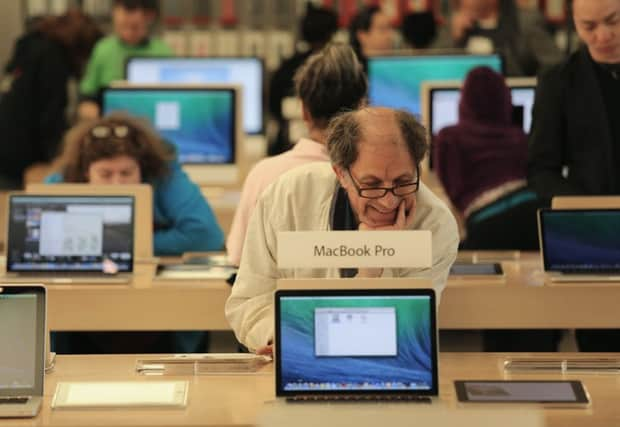‘Lifestyle brand’ a target to aim for


Peer through the windows of Apple’s Scottish stores in Aberdeen, Glasgow or Braehead and the number of casual shoppers browsing computers, laptops, phones and tablet devices will quickly confirm the brand’s status as the market leader.
What may be less familiar is Apple’s position as one of the UK’s most popular “lifestyle” brands, a rating it shares with bedfellows Nike and Dyson, according to a major survey of 2,000 consumers we commissioned with renowned retail analysts Conlumino.
Advertisement
Hide AdAdvertisement
Hide AdFor the uninitiated, a lifestyle brand is priced just below the luxury market and embodies a specific identity and promotes certain attitudes, interests and opinions of a group or culture.
By anyone’s standards, the inaugural Pinsent Masons Lifestyle Brands survey threw up some impressive figures – namely that the lifestyle brands market is now worth some £31 billion annually and has for the first time overtaken the luxury brands sector, which is worth a not insignificant £22.7bn.
That represents growth of 84 per cent since 2008 and it is forecast that over the next four years the UK lifestyle brand sector will soar to £56.3bn – twice the value of the luxury sector at £28.3bn.
Luxury brands have been the big success story of British exporting since the credit crunch, so what these figures suggest is a really quite significant shift. Our research predicts that clothing and food will lead growth, with both almost doubling sales for lifestyle brands.
Lucrative and nimble business models means lifestyle brands represent a healthy investment opportunity and costs are far lower than those associated with the luxury market, which typically requires significant financial backing to develop and maintain.
Celebrity endorsements from A-listers such as George Clooney (Nespresso), and model Cara Delevingne who is ambassador for Mulberry, add to the appeal of lifestyle brands and with survey predictions of 81 per cent growth by 2018, this sector by far offers the most lucrative opportunities for investors in the retail sector.
Companies however, must be prepared for the numerous stumbling blocks which can trip up even the wiliest domestic operator. In short, businesses have got to do their homework if they have serious ambitions of becoming the new Apple. Only a handful of brands will be able to expand without any adaptation to their proposition and the brands themselves will need to think hard about access to finance and potential equity investment to tap into international opportunities.
So what is behind this growth and what do businesses have to consider when looking to expand internationally in search of this success? The surge in popularity can be partly attributed to economic recovery in markets like Asia Pacific, South American and the Middle East, where increasing levels of disposable income has led to rapid expansion of the consumer class and is driving sales of lifestyle brands.
Advertisement
Hide AdAdvertisement
Hide AdThe report identifies markets outside of Europe as offering the greatest growth. The lifestyle brands market is forecast to grow by some 277 per cent in Asia Pacific, 120 per cent in South America and 97 per cent in The Gulf by 2018.
The rewards can be huge but accessing those markets can be far from straight-forward, raising complex questions around brand protection, funding, franchising arrangements and other forms of partnerships such as joint ventures or mergers and acquisitions. Getting a franchising arrangement or Joint Venture wrong, for instance, can cripple a young business – but the real killer is loss of control of the brand.
Getting the entry strategy right can be make or break. In Asia Pacific, for instance, luxury brands have established relationships with many of the biggest local players who can open doors and plug you into the right shopping outlets in the best locations.
This means that lifestyle brands are likely to have to partner with lesser-known entities, which means getting the contractual arrangements absolutely right. Losing control of your brand, whether it be through counterfeiting, unethical production or simply moving into the wrong locations, can be fatal.
It is clear there is a sizeable opportunity for those players in the retail and consumer brand space who recognise the potential and develop their strategies accordingly and while not without risk, there can be great reward for those who get it right.
• Tom Leman is head of retail and consumer at Pinsent Masons www.pinsentmasons.com
SEE ALSO